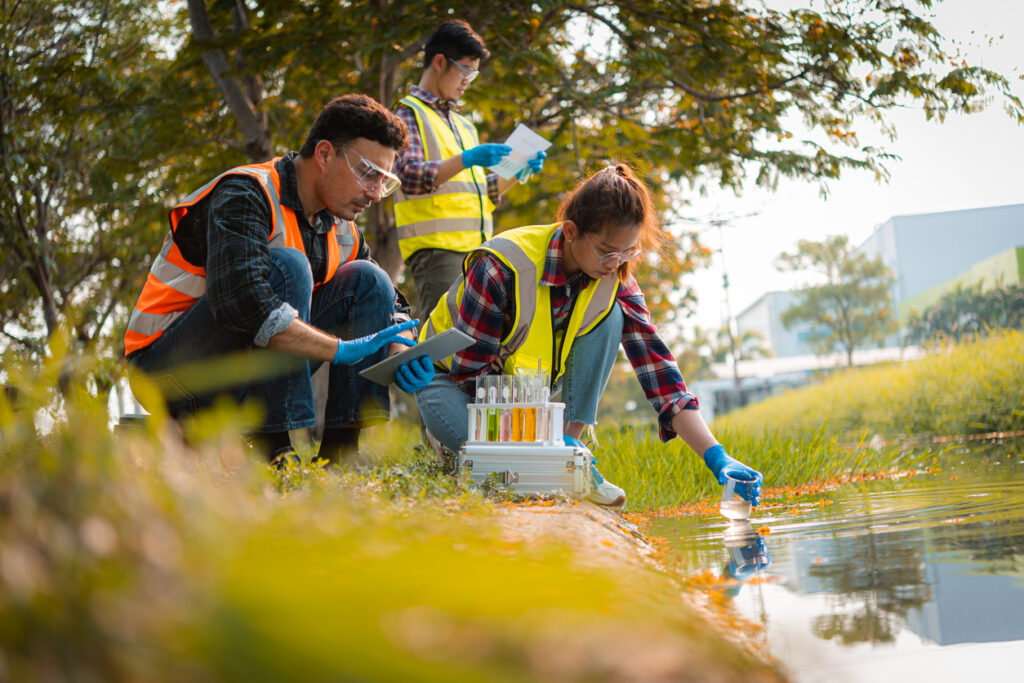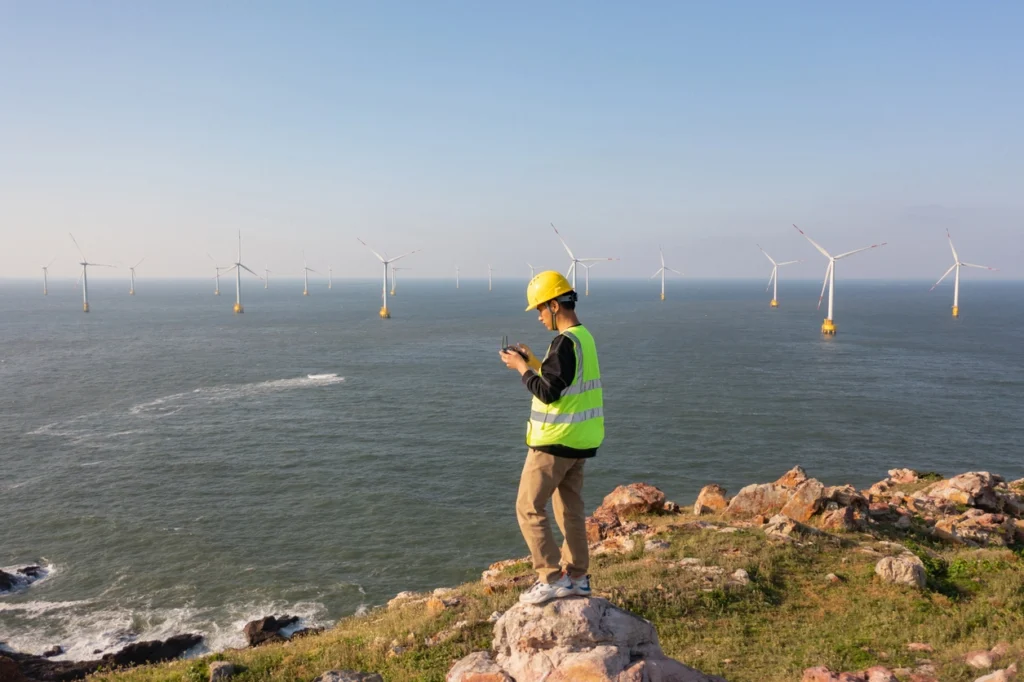A Phase I Environmental Site Assessment (ESA) is a crucial step before buying or selling commercial property. It’s designed to uncover any hidden environmental risks that could lead to costly cleanup or liability in the future. But, understanding the cost of this essential process can be tricky. That’s why we’ve created this ultimate guide to a Phase I ESA cost – we want to make sure you have all the information you need to make informed decisions.

Key Factors Impacting Phase I ESA Cost
Picture this: a small empty field versus a sprawling, multi-structure industrial complex. It stands to reason that a thorough environmental assessment of these properties will differ wildly in scope and, consequently, cost. Here are the main factors that influence what you’ll pay for a Phase I ESA:
Property Size
Larger properties simply require more time and resources to assess. Environmental consultants need to walk the site, inspect buildings, and possibly extend their research to wider surrounding areas.
Property Location
Location matters in a few ways. A densely packed urban lot may present access challenges, while a rural property might mean longer travel times for the assessor. Additionally, certain regions are known for specific historical industries that pose a greater risk of contamination.
Property Complexity
Investigating a property with a long, varied history of uses – like a former gas station or manufacturing center – demands deeper research into permits, regulatory records, and potential hazardous materials.
Report Turnaround Time
If you need results fast, be prepared to pay a premium. Expedited Phase I ESAs often necessitate overtime or restructuring the consultant’s schedule.
Consultant’s Experience & Reputation
Environmental firms with highly qualified teams and a track record of excellence naturally command higher fees. This expertise could be invaluable in correctly identifying potential environmental concerns.
The Typical Cost Range of a Phase I ESA
Unfortunately, there’s no single, magic number when it comes to Phase I ESA costs. However, we can provide a realistic range to help you budget effectively. Think about the key factors we discussed: a small, undeveloped urban property will likely be at the lower end of the spectrum. In contrast, you should anticipate substantial costs for inspecting a large, historically industrial site.
Here’s a breakdown to guide you:
Simple Properties
For vacant lots, small commercial buildings with uncomplicated histories, and properties with minimal environmental risk, a Phase I ESA might fall in the $ – $ range.
Average Complexity Properties
This encompasses the majority of assessments – think multi-unit residential complexes, older commercial buildings, or sites with some known past use to investigate. Expect to pay around $ – $.
Highly Complex Properties
Former factories, large-scale agricultural sites with potential pesticide residues, properties with underground storage tanks…these demand extensive research and likely fall in the $ – $ range, sometimes even exceeding that.
Important Note: Regional variations, consultant fees, and additional testing (if the Phase I ESA warrants it) can all influence final costs.

What’s Included in a Phase I ESA (Detailed Breakdown)
Think of a Phase I ESA as a thorough environmental detective mission for your property. Your consultant will meticulously gather information in several ways:
Historical Records Review
This includes scrutinizing aerial photos, maps, property deeds, and fire insurance records to uncover clues about past uses and potential contamination sources.
Site & Surrounding Area Walkthrough
The consultant performs a visual inspection, looking for signs of hazardous materials, improper storage, spills, or any unusual features on your property and adjacent ones.
Regulatory Agency Check
The consultant delves into government databases for any records of violations, past permits, known contamination issues, or nearby sources of pollution that might affect your property.
Interviews with Relevant Parties
This could include speaking with the current owner, past owners, tenants, government officials, or neighbors to gather any insights into the site’s history.
Final Compiled Report and Findings
All the collected information is analyzed and presented in a clear report. This document will outline any Recognized Environmental Concerns (RECs), potential risks, and might even include recommendations for further investigation.
When a Low-Cost Phase I ESA Might Be a Red Flag
It’s tempting to opt for the cheapest Phase I ESA you can find, especially when budgets are tight. However, be cautious of cut-rate prices. Some companies may advertise low fees but then cut corners to meet those rates. This might mean rushed inspections, relying solely on database searches instead of site visits, or employing inexperienced assessors.
The risks of an inadequate Phase I ESA are significant. You might miss hidden contamination that could cost you a fortune in cleanup down the line or put you at risk of legal liability. It could also derail a property deal if potential buyers or lenders get spooked.
Remember, a Phase I ESA is an investment in your peace of mind. Opting for a reputable, experienced firm is crucial – even if it means paying a slightly higher fee.
Diablo Green: Your Trusted Partner for Phase I ESAs
At Diablo Green, we understand the importance of thorough, accurate Phase I Environmental Site Assessments. Our team has years of experience serving clients across diverse industries, including tower developments. We combine in-depth knowledge of environmental regulations with localized expertise to uncover any potential risks present on your property.
Here’s what sets us apart:
- Focus on Compliance: We stay up-to-date on the latest environmental standards and best practices, ensuring your Phase I ESA meets all necessary requirements.
- Transparent Communication: We keep you in the loop throughout the assessment process, explaining our findings clearly and concisely.
- Tailored Solutions: No two properties are alike. We customize our approach to your specific needs, offering a range of additional services and environmental testing if required.
Ready to learn more? Contact us today for a free consultation and discover how Diablo Green can protect your investment.

Safeguard Your Investment: Choose the Right Phase I ESA Partner
The cost of a Phase I ESA should be seen as a wise investment rather than simply an expense. Selecting a reputable company with experience in your specific industry ensures that you receive a thorough assessment, protecting you from unforeseen environmental liabilities. Don’t let a focus on the lowest price put your financial future at risk. By partnering with a qualified environmental consultant, like Diablo Green, you gain peace of mind knowing you’ve done your due diligence.
Frequently Asked Questions About Phase I ESA Cost
Can I do a Phase I ESA myself?
While resources exist for the very motivated, a Phase I ESA adhering to industry standards requires specialized knowledge of regulations and access to specific historical records. Hiring a qualified consultant provides accuracy and legal protection.
How long does a Phase I ESA take?
The time frame varies with property complexity. A simple assessment might take a few weeks, while a complex site could necessitate a month or more. Your chosen firm can provide clearer estimates based on project specifics.
What’s the difference between a Phase I and Phase II ESA?
A Phase I identifies potential contamination. If concerns are found, a Phase II involves sampling soil, water, etc., to confirm contamination presence and extent.
Are Phase I ESAs required by law?
While not always legally mandated, Phase I ESAs offer liability protection for buyers and are often required by lenders and investors to secure financing.
Does a clean Phase I ESA guarantee no environmental problems?
A Phase I ESA significantly reduces your risk, but it cannot uncover every possible issue hidden on a site. It’s a crucial due diligence step, not an absolute guarantee.